Read the statement by Michael Teeuw here.
*NEW LIST 29.06.2021* Two way community order for mirror glass for all european countries - Open until at least 10 people have entered
-
what about sandblasting the area? Is it possible for the material?
If illuminated from the back would it be enough to illuminate a person in the front?
Regards
Eldrik -
@eldrik
unfortunately I can neither answer one nor the other question. I’m sorry. Nobody had this plan before -
Hey @Goldjunge_Chriz . Why is your advertised mirror so reflective? I put for a test everything together, but it is very dark. How can I improve it?
-
@internetpolice
do you have the mirror upside down? please use the other side once. -
@goldjunge_chriz No, could figure out which site is the back. Still dark and not even close to your picture. Or did you made the expierence, that the manufacturer send different reflection form charge to charge?
-
@internetpolice
no, every mirror is the same. In this case you should play with the lighting conditions in your room, the ambient lighting may not be suitable -
@internetpolice said in *NEW LIST 29.06.2021* Two way community order for mirror glass for all european countries - Open until at least 10 people have entered:
Hey @Goldjunge_Chriz . Why is your advertised mirror so reflective? I put for a test everything together, but it is very dark. How can I improve it?
I had the same impression when I installed my first magic mirror a couple of years back with Chriz’ mirror glass and man, was I NOT pleased with the outcome initially…
But that was before I understood how a 2-way-mirror works, as this is crucial to be able to find the right setup/mirror glass for your individual needs.At the moment I do not have a sample of Chriz’ mirror at hands (the one I ordered is installed at my brother’s house) so the pictures below are for illustrational purposes only!
But I can definitely say now that Chriz’ mirror is one of the best you can get out there. Of course, all depends on your individual room conditions (bright or dark, windows or none, etc.). When it comes to weight though there is no competition. Chriz’ mirror is incredibly light.But don’t get too excited. 2-way-mirrors are simply much “darker” than regular mirrors…
@Goldjunge_Chriz Nicht dass es heisst, ich würde hier Deinen Thread kapern ;-) Mein unten stehender Vergleich soll nur technische Details erklären.
It’ s a little off-topic, but…
A usual mirror is made from clear glass and has the reflective coating on the rear-side. That way all “incoming” light travels through the glass, gets reflected (minus refraction of the glass itself) and travels all the way back out. This way you will get the highest possible reflection (~97%) but zero transmission. For illustrational purposes I call this a 1-way-mirror because the light source (ambient light) is only on one side of the mirror.
On a 2-way-mirror on the other hand, there are 2 light sources. One coming from the frontside (ambient light) and one coming from the backside (display light). The purpose of such a mirror is to “separate” these two light sources as good as possible while still allowing a certain amount of backside light to pass through at the same time. Most mirrors I know try achieve this goal by a. having the light source on the backside way dimmer than on the frontside, b. being made from slightly tinted glass and c. having the reflective coating on the frontside of the glass.
That way (dimmed-down) light coming from the backside (=display output) is additionally “dimmed” because it has to travel through tinted glass first before being reflected by the outer coating sending most of the light back to the inside. The amount of light going through is what we see as (intentional) screeny output from the frontside.
Ambient (=frontside) light on the other hand needs to be reflected as good as possible whilst ideally not being allowed at all to go “into” the glass. Kinda hard task when the reflective coating is nowhere near of 96% (and simply shouldn’t be for our purposes), isn’t it?
If you check the specs of the2-way-mirrors on the market you will find out that there is no mirror stating a reflection ratio noteworthy over 60%. I guess that is somewhat the limit. Chriz has not stated the reflection ratio of his mirror but I assume that is about the same numbers. Well, compared to regular mirror that is within the ballpark of about half the reflection. No wonder, it is noticeably darker than a regular mirror.Also a crucial thing to get the best results is to have set the backside/frontside brightness to the manufacturer’s specs, though not all state these values in their datasheets.
For figures & pictures (sorry Chriz, but I don’t have any splinters left off of your mirror):
A mirror with 25% transmission and 60% reflection, like Mirroview, needs a back/front light ratio of 1:17 (left).
A mirror with 3% transmission and 50% reflection, like Chrome Spy, needs a back/front light ratio of 1:8 (right).That means e.g. for the first mirror the ambient light needs to be 17 times brighter than the display content behind the mirror to properly work.
When I compare the reflection of those 2 mirrors I can hardly tell a difference with an all black background (except Chrome Spy being a little “browner” by nature). When the background is all white you can hardly see a reflection on the left mirror. The ambient light has been on at the the same level (normally bright office) on both images. Though Mirroview seems to have a coating on front & back thus being technically a bit different. It looks a bit like those mirrors they use for laser applications.
So it really depends on getting the back/front light ratio right!
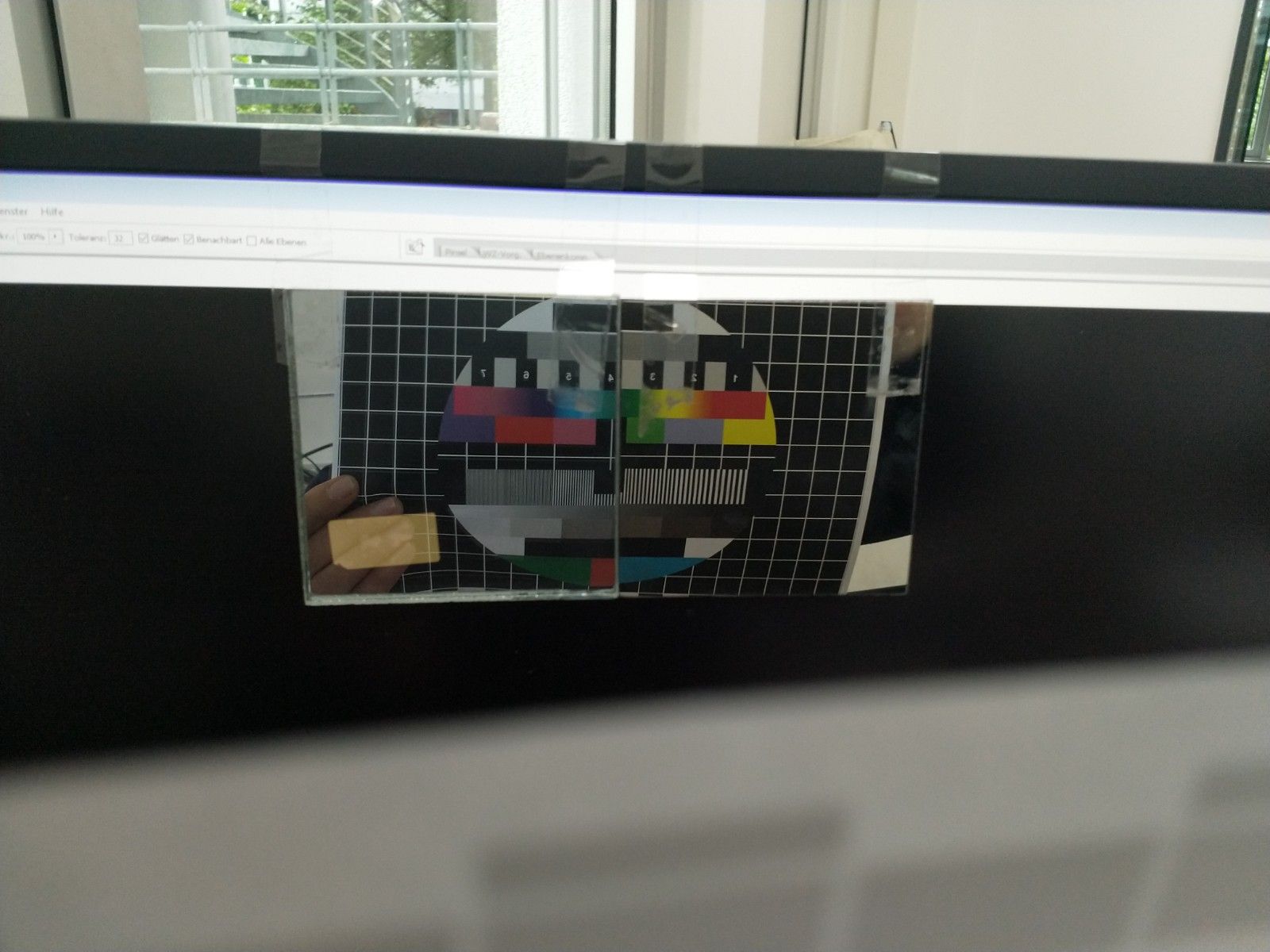
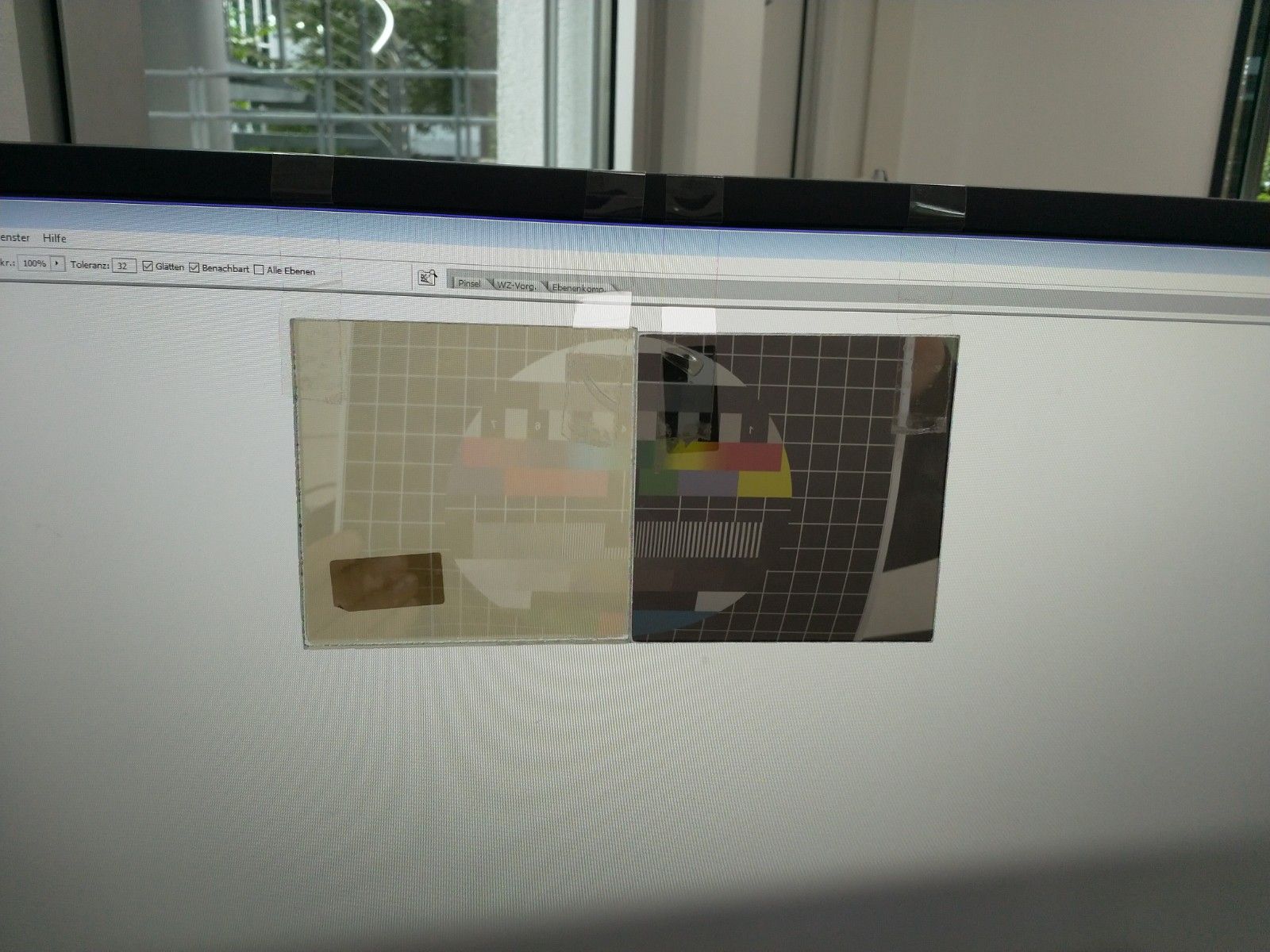
In terms of transmission the difference is far more noticeable in a dark or lit room!

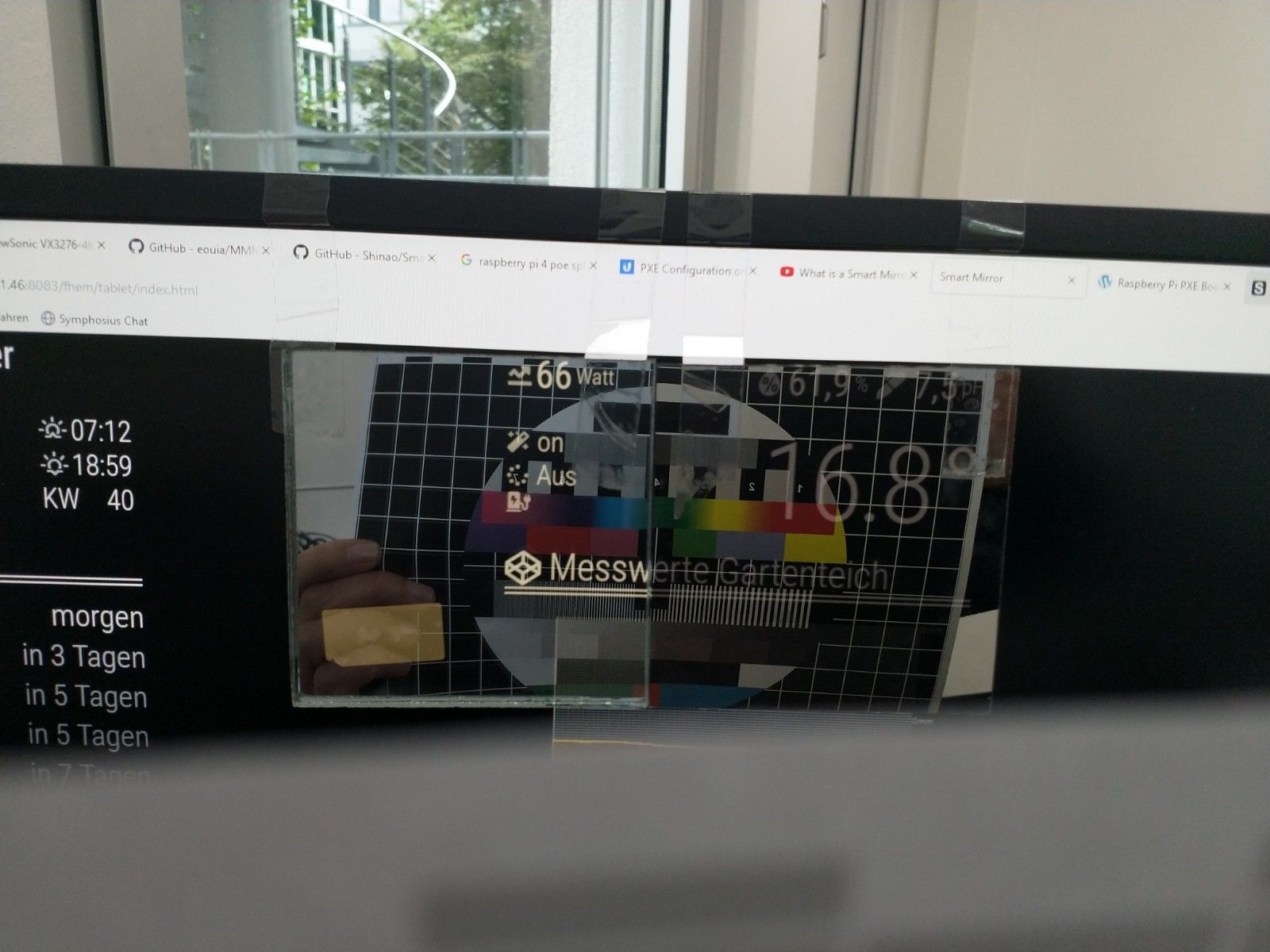
I’ll be happy to also compare Chriz’ mirror as well if I get a chance to buy a sample piece!
But as much as I remember his mirror has a transmission of ~ 24%. So I guess it’d be the same in terms of “font brightness”. Dunno about reflection though.
Cheers,
Tom -
Last night I found a piece of Chriz’ mirror in the office basement. I remembered that I kept some pieces of my 2nd mirror, which arrived broken back in 2017.
So here is the comparison of
Far left: Chriz’ mirror (~3mm, ~24% transmission, ??? reflectance, light ratio ???)
Middle: Pilkington Mirroview (6mm, ~25% transmission, ~65% reflectance coated side, 59% reflectance glass side, light ratio 17:1)
Far right: Mirropane Chrome Spy (4mm, ~8% transmission, ~48% reflectance coated side, 8% reflectance glass side, light ratio 8:1 )I couldn’t manage to have a picture taken with the test pattern shown on all 3 mirrors at the same time. But you could still compare with the pictures from the previous posting.
- White display background:
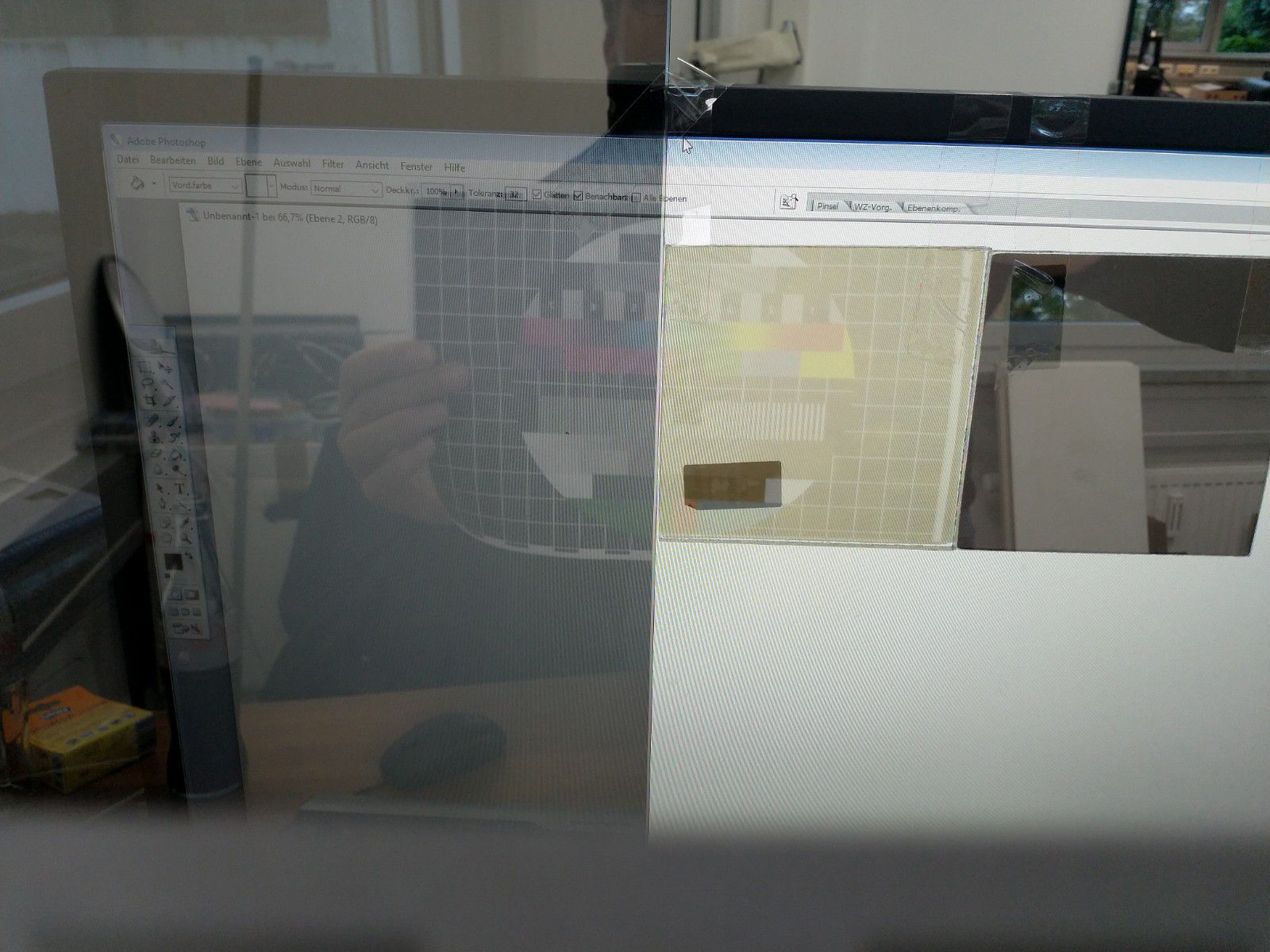
- Black display background:
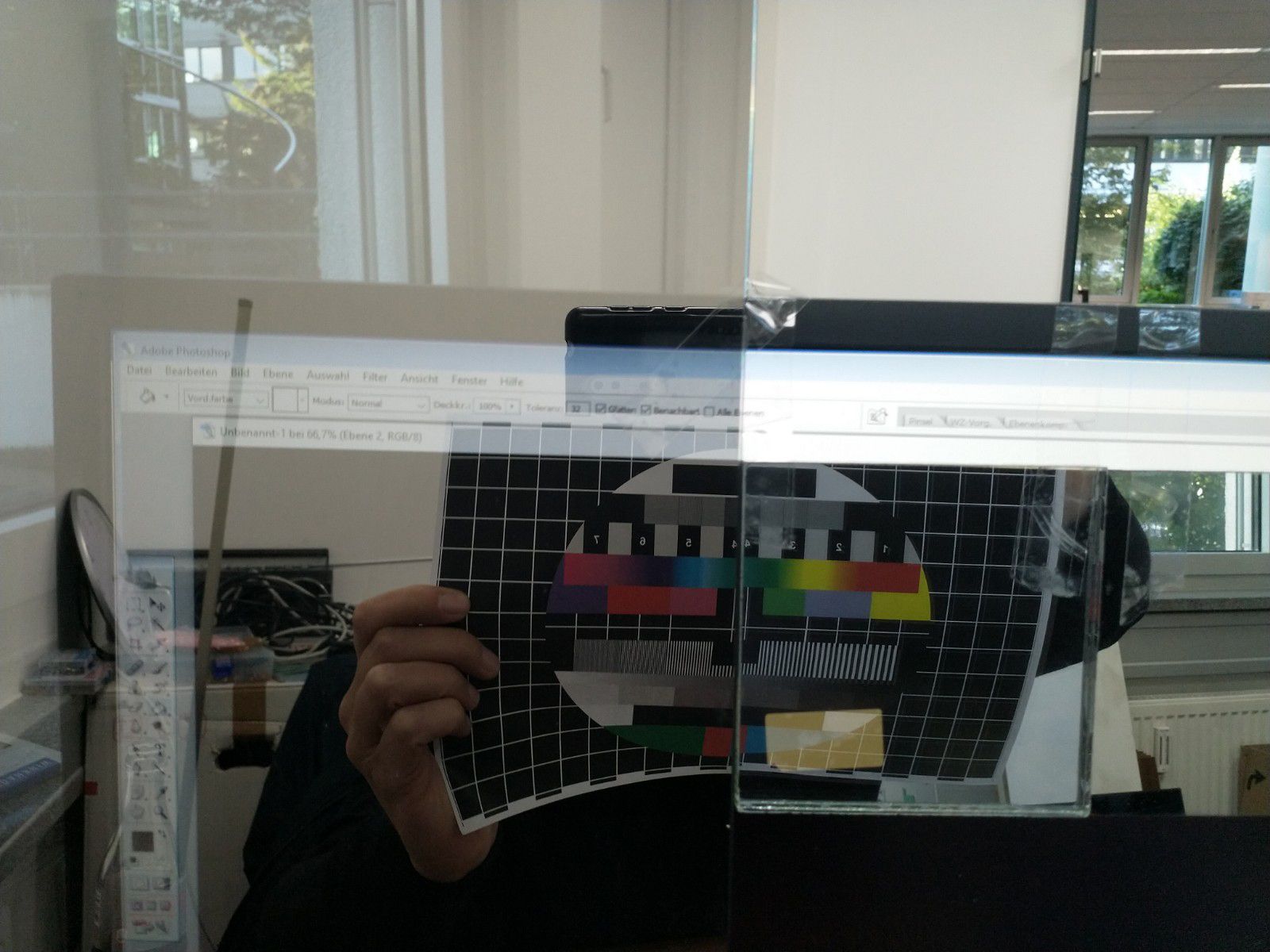
- And with some sort of GUI:
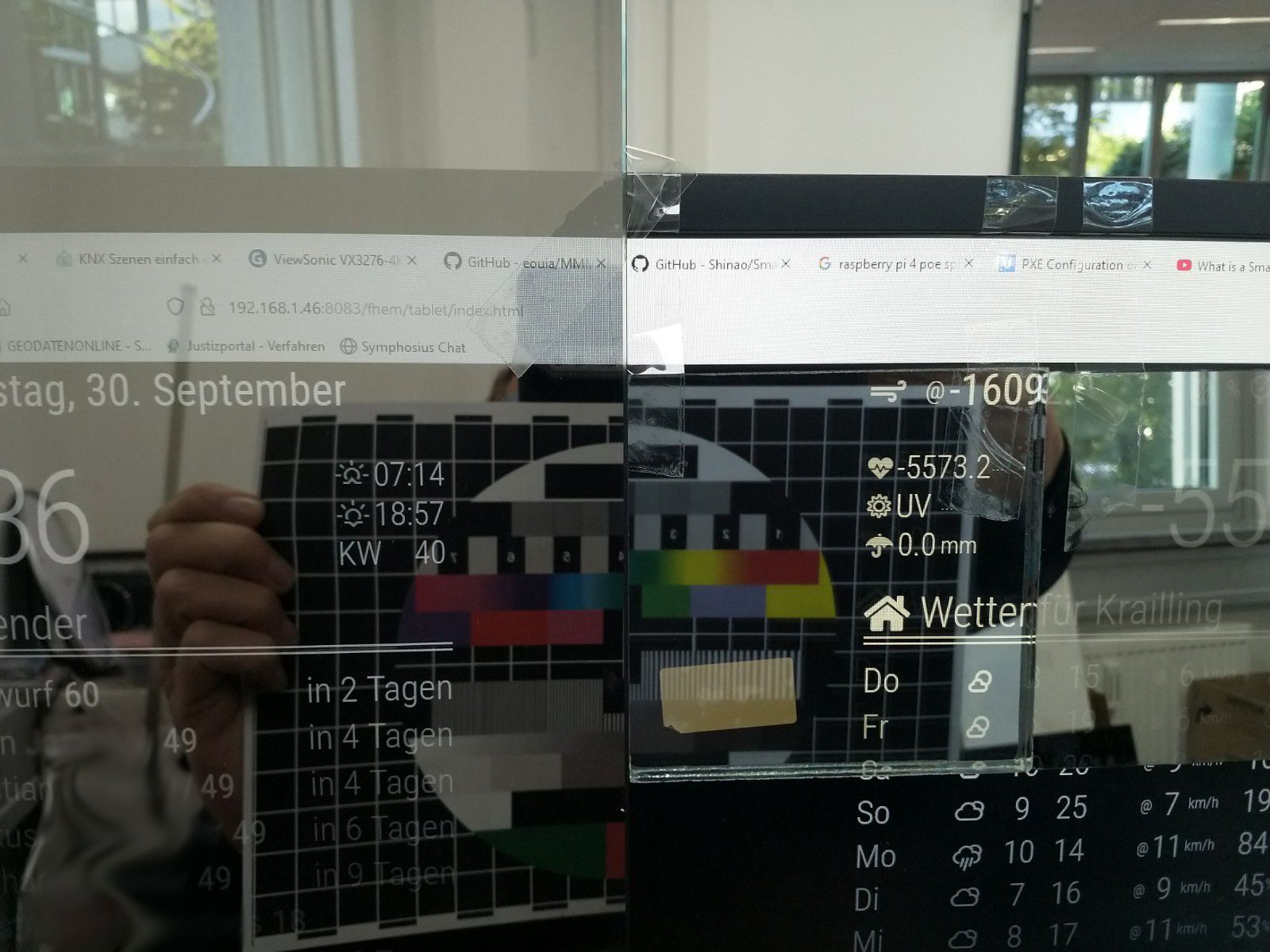
Please note that though these pictures might give you a glimpse on “usability” for a smart mirror but may be misleading in terms of actual “mirrorness” of the compared products. 2-way-mirrors are simply waaaay less bright/reflective = darker than regular mirrors. I would not recommend any to be used as a makeup-mirror or in a bathroom or low light condition. Of course this is also true vice versa in really bright light conditions…
From “feels” I’d say that Chriz’ mirror has a little less transmission than the stated 24%. Given that Mirroview’s statement of 25% is true.
It is comparable with Chrome Spy’s “brownish” tint but has way better transmission. Might be a tad “darker” than Chrome Spy though.
I have to admit that the brownish tint might be a good choice if you like “schmoozish” mirrors anyway. I’d say that even on regular mirrors with a brownish tint you look “fresher” than you probably are ;-) Trade-off is the darker feel and the mirror probably being less color-fast.
IMHO Chriz’ mirror will give you the best results on displaying fonts as it somehow smoothens the pixels of the screen a bit.Mirroview is a little bit brighter than the other two, but that might be deceiving because its tint is rather grey/blue’ish. So a reflected wall e.g. looks more white but its reflection image is a bit on the cool, technical side (see picture 2 next to lower right corner of the test pattern). All in all it probably might count as the “realest” reflection of all three. Due to its quite transparent characteristics it is definitely best if you plan on showing colorful videos/diagrams on your mirror as colors are shown with less variation than on the other two. On the other hand you will be able to see the display’s pixels if you look real close.
One last thing:
There is no “one-mirror-fits-all” on a 2-way-mirror setup! I suggest you get a set of samples and depict the right mirror for you on-site with your individual lighting situation. -
@eldrik said in *NEW LIST 29.06.2021* Two way community order for mirror glass for all european countries - Open until at least 10 people have entered:
what about sandblasting the area? Is it possible for the material?
If illuminated from the back would it be enough to illuminate a person in the front?
I guess there’s no other way than trying it out by yourself…
But sandblasting sounds like the worst way to go to me.
I could imagine that there would be light bleeding into the mirror glass causing some unwanted effects (like a halo). To minimize this you should cutout the black foil (you hopefully put) on the backside of your mirror and put some opaque acrylic over the cutout. That way the light from the LEDs will get diffused before it enters the glass. Enough distance from cutout to the display is also highly advisable. -
@tomster
thanks for the detailed and clear explanation ;)
